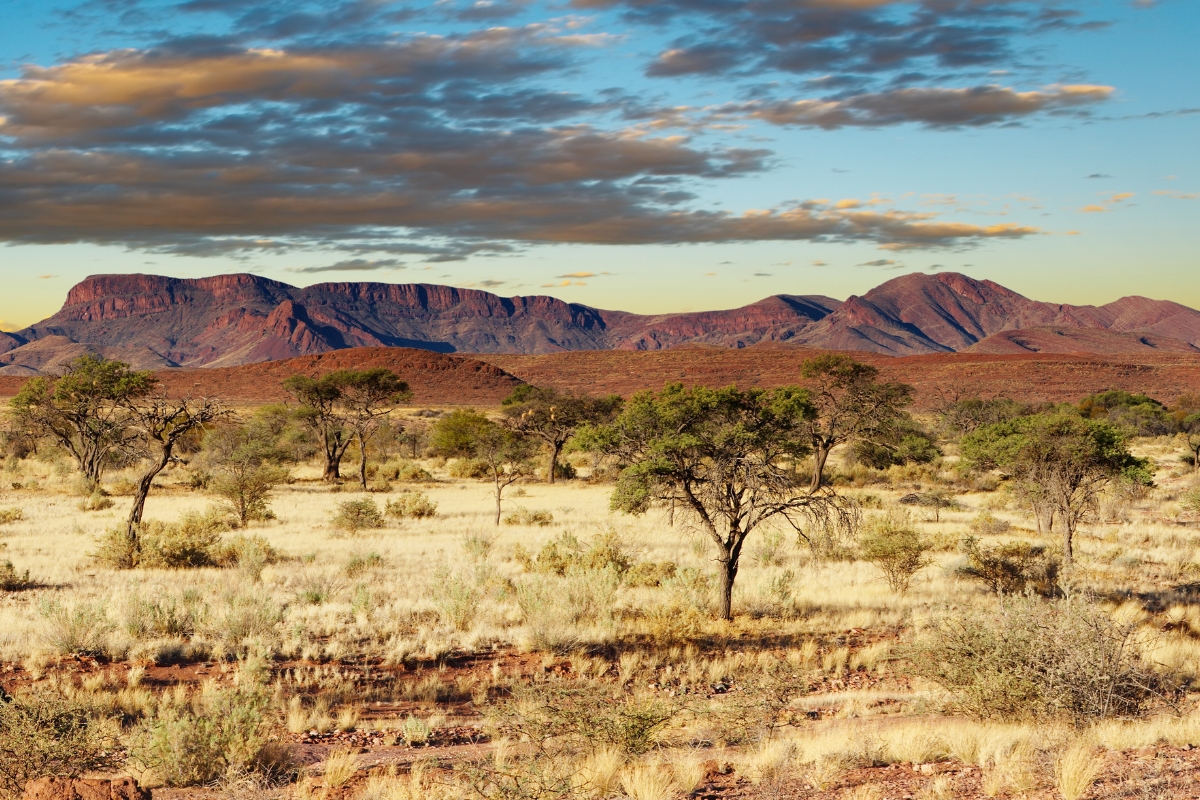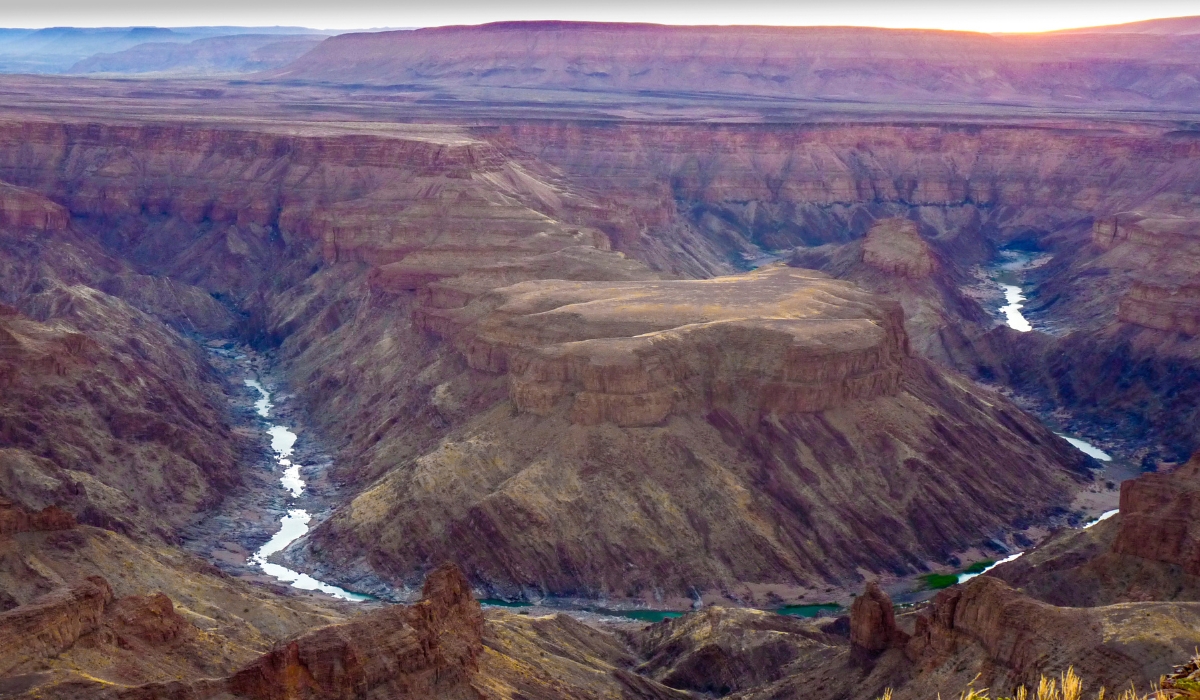
Namibia is a land of stark and compelling landscapes. Understanding the myths and legends behind their creation only adds to their beauty.
Namibia is often celebrated for its stark beauty – endless horizons, red dunes, rugged mountains, and vast open skies. But for many Namibians, these landscapes are more than scenic vistas or safari backdrops. They are living, sacred spaces steeped in ancestral meaning, myth, and cultural memory. Long before national parks and GPS coordinates, Namibia’s natural features were, and still are, part of the spiritual fabric of its communities.
In this journal entry, we explore how Namibia’s landscapes are woven into cultural identity and spiritual beliefs, and why understanding these places from a cultural perspective adds depth to any visit.
Twyfelfontein: More than ancient rock art
Section Type: standardWidthImageS
Find fascinating petroglyphs as you explore Damaraland’s Twyfelfontein.
Twyfelfontein, a UNESCO World Heritage Site in Damaraland, is often visited for its extraordinary collection of rock engravings – over 2,000 images etched into stone by the San people thousands of years ago. But these aren’t simply primitive drawings. They are spiritual records.
For the San (Bushmen), the land itself is a canvas on which dreams, rituals, and the movements of the spirit world are traced. The engravings depict animals not only for their physical presence but also for their symbolic meaning. Lions, giraffes, and rhinos are linked to trance dances and hunting magic. Some images are maps of water source (critical in this dry region) but they’re also pathways through the spirit world.
To walk through Twyfelfontein is not just to encounter art; it’s to stand in a place where the boundary between the physical and spiritual has always been porous.
Brandberg Mountain: Home of ancestral spirits
Section Type: standardWidthImageS
Towering over the plains of Damaraland, Brandberg – meaning "Burning Mountain" in Afrikaans due to the way it glows at sunset – is the highest peak in Namibia. It holds deep cultural and spiritual significance for local Damara people and the San.
The mountain is considered a sacred place where the spirits of ancestors dwell. At its base and in its caves, hundreds of rock paintings can be found, including the famous "White Lady" painting, which despite its European nickname, is likely a shamanic figure. These paintings are part of a broader cosmology that sees the mountain as a place of transition, meditation, and ancestral communication.
While Brandberg is a popular hiking destination, it is also a cultural site where silence, respect, and awareness of its spiritual gravity are essential.
Springs, rivers, and omens
Section Type: standardWidthImageS
The beautiful Zambezi River flows through Zambia, Angola, Namibia, Botswana, Zimbabwe, and Mozambique.
In a country where water is scarce, natural springs and rivers are often considered sacred. The Zambezi and Kunene rivers in northern Namibia, for instance, are more than just borders or resources – they are sources of life and spiritual power. In many communities, particularly among the Ovambo and Himba, water sources are tied to ancestral spirits and are often protected by taboos.
Some springs are believed to have healing properties. Others, such as hot springs in regions like Ai-Ais or Gross Barmen, have long histories of ritual bathing and spiritual renewal, predating their use as tourist wellness destinations.
For the Himba people, water plays an indirect role in spirituality. They are semi-nomadic pastoralists who follow strict fire rituals instead of water-based cleansing. The ancestral fire (okuruwo) burns continuously and is a direct line of communication with the spirit world. While not centered on a water feature, the sacredness of natural elements in their worldview underscores how the environment shapes ritual and belief.
The Etosha Pan: A spiritual salt flat
Section Type: standardWidthImageS
How often do you see a photo of lions co-exist with zebras and wildebeests?
Etosha National Park is famous for wildlife safaris and its vast salt pan – a flat, white expanse that dominates the landscape. But for the Hai//om people, who lived in the area for generations before being displaced in the mid-20th century, Etosha is more than a game-viewing hotspot.
To the Hai//om, the Etosha Pan is a place of deep spiritual resonance. According to oral traditions, it is linked to stories of creation, punishment, and transformation. One such tale tells of a village massacre, after which a grieving woman cried until her tears formed the salt pan. Stories like these reflect the emotional and spiritual mapping of the land – how trauma, memory, and belief become etched into geography.
Today, some Hai//om are working to reclaim cultural access to Etosha, offering heritage tours that include storytelling and traditional perspectives on the land’s meaning.
Fish River Canyon: The writhings of a giant snake
Section Type: standardWidthImageS
One would think this is the Grand Canyon – we have news for you…

Africa’s largest canyon, Fish River Canyon in southern Namibia, is a dramatic natural wonder that attracts hikers from around the world. But long before it became part of trekking itineraries, it was embedded in the oral traditions of local Nama communities.
One Nama myth describes the canyon as being carved by a giant snake fleeing from hunters, twisting and turning through the land and gouging the earth in its path. This aligns with a common motif in African mythology, where serpents and dragons are often creators of rivers and canyons.
These myths aren’t just stories – they offer insight into how the Nama people perceive landscape as alive, animated by spirits and ancestral deeds. Even the most geologically ancient places are remembered through narratives that bind people to place.
Why sacred landscapes matter to travelers
As travelers, we often seek meaning in the places we visit. Namibia’s landscapes offer that meaning not just through their natural beauty but through the layers of cultural and spiritual significance that locals have attributed to them for centuries.
Recognizing these sacred dimensions adds richness to any journey. It reminds us that we’re walking through lands that are storied, remembered, and revered. Understanding these meanings also encourages more mindful, respectful tourism – especially in places where access is a privilege, not a right.
Namibia’s desert might appear empty at first glance, but it holds a wealth of spiritual and cultural meaning.
Section Type: cta
Experience this for yourself on a custom, private Namibia expedition! Check out a sample itinerary – then speak to a Destination Expert about crafting your own.


Company
Partners
Copyright © 2025 SA Luxury Expeditions LLC, All rights reserved | 95 Third Street, 2nd floor, San Francisco, CA, 94103 | 415-549-8049
California Registered Seller of Travel - CST 2115890-50. Registration as a seller of travel does not constitute approval by the state of California.










